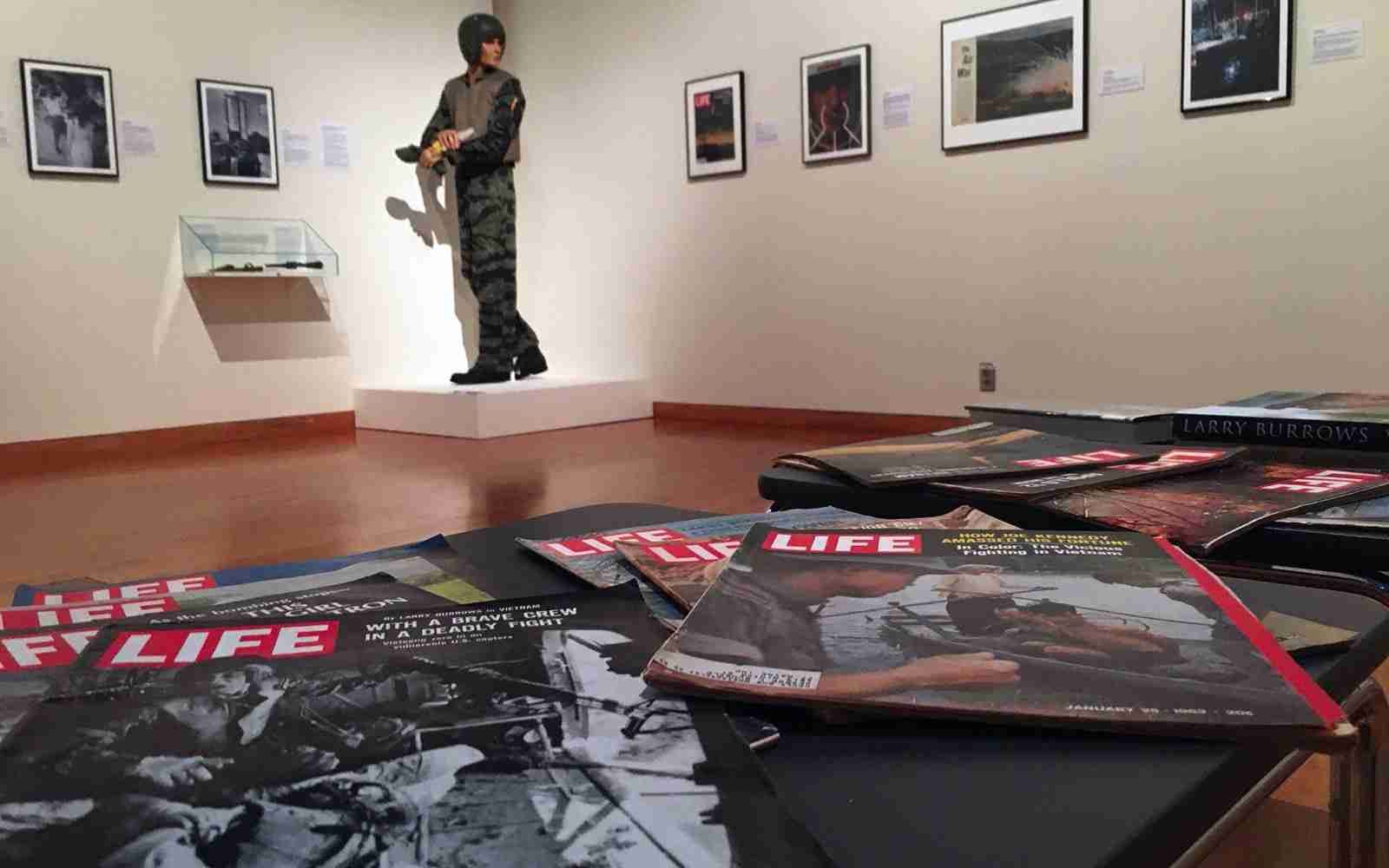For younger people, the Vietnam War is a piece of history, something they heard about from parents, grandparents, or teachers. But the images of war that older Americans saw unfolding nightly on their televisions are an indelible part of the memories of their youth.
Another source of information, Life magazine, was delivered to mailboxes across the country weekly. Many of its images defined the legacy of that era and war.
One of the photographers most heavily featured in the magazine was Larry Burrows, a photographer whose work is currently on exhibit at the Fort Wayne Museum of Art through the end of February.
History meets art
The idea for the exhibit came both from the museum’s executive director, Charles Shepard, and from those who had seen earlier, similar exhibits.
“Charles is really as much a history person as he is an art person,” said Brian Williamson, Fort Wayne Museum of Art’s technical director and curator of this exhibit. “We had had a World War II exhibit and another Vietnam exhibit previously where we used artifacts from the Museum of the Soldier in Portland, Indiana, and people had been asking when we’d have another Vietnam exhibit.”
Williamson, a veteran of the Indiana National Guard who served in Afghanistan, is also a military historian and co-founder of the Museum of the Soldier. That makes him the right person to bring together the Burrows exhibit which features photographs from 1962 until Burrows’ death in 1971.
“Larry Burrows was one of the major photographers for Life magazine,” Williamson said. “A lot of photographers lost their lives in Vietnam, and his work cost Burrows his life. He was shot down. The scope of his work for Life included a lot of combat stuff, but it also showed wounded children, grieving children. Some of the photos are very delicate but also very much in your face.”
Staying in touch with the war
Williamson pointed out that many Vietnam veterans are reaching an age that we not long ago associated with veterans of World War II, with the youngest Vietnam vets now in their late 60s. Many have very personal connections to the photographs and artifacts of the exhibit.
Williamson compared what he knows of Vietnam to his own experiences.
“I had a very good deployment to Afghanistan,” he said. “I was never shot at and was only blown up once. It’s hard to relate to these guys who were living days on end with C-rations and the constant threat of being shot. As someone who studies military history and collects artifacts, I wanted to choose artifacts go with the photographs.”
One example of that comes with a deck of Ace of Spades playing cards. Featured in the Francis Ford Coppola film Apocalypse Now, The Vintage News website ran an article in 2018 about the folkloric use of the playing card in Vietnam.
“The card, associated with death, could be found among standard-issued card decks distributed to soldiers,” wrote Nikola Budanovic. “The practice of putting those cards on the bodies of dead enemies began in Vietnam and was most probably initiated by American soldiers in the field. Even though it became popular during the 1960s, the card’s use as a symbol dates earlier–to the days of World War II. It was the soldiers of the 101st Airborne Division who first started wearing helmets with an Ace of Spades emblem painted on them.
“But in Vietnam, it took on a darker and more sinister meaning,” he continued. “The intention was to target the alleged superstitions of the North Vietnamese by making the Ace of Spades the symbol of death, humiliation, and suffering.”
Rich Context
Those cards, along with helmets and clothing worn by the soldiers, provide a rich context for the photographs which Burrows risked his life to share with the world.
Born in London in 1926, Burrows was just 44 when he lost his life a few years before the conflict ended following the fall of Saigon in April 1975.
The images and memories will be strong for those who remember those days well, but Williamson said that younger generations can learn much from the exhibit.
“It’s hard for the current generation to imagine it all,” he said. “Those magazines would sit on your coffee table, and you’d look at them over and over. There was a lot of the war covered on television, but those images were fleeting. You’d see them, and they were gone. But these photographs and images were always there.”
 Submit Your Event
Submit Your Event


